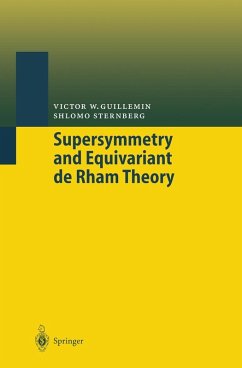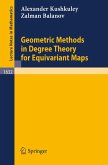Equivariant cohomology in the framework of smooth manifolds is the subject of this book which is part of a collection of volumes edited by J. Brüning and V. M. Guillemin. The point of departure are two relatively short but very remarkable papers by Henry Cartan, published in 1950 in the Proceedings of the "Colloque de Topologie". These papers are reproduced here, together with a scholarly introduction to the subject from a modern point of view, written by two of the leading experts in the field. This "introduction", however, turns out to be a textbook of its own presenting the first full treatment of equivariant cohomology from the de Rahm theoretic perspective. The well established topological approach is linked with the differential form aspect through the equivariant de Rahm theorem. The systematic use of supersymmetry simplifies considerably the ensuing development of the basic technical tools which are then applied to a variety of subjects (like symplectic geometry, Lie theory, dynamical systems, and mathematical physics), leading up to the localization theorems and recent results on the ring structure of the equivariant cohomology.
Dieser Download kann aus rechtlichen Gründen nur mit Rechnungsadresse in A, B, BG, CY, CZ, D, DK, EW, E, FIN, F, GR, HR, H, IRL, I, LT, L, LR, M, NL, PL, P, R, S, SLO, SK ausgeliefert werden.
From the reviews: MATHEMATICAL REVIEWS "The authors are very generous to the reader, and explain all the basics in a very clear and efficient manner. The understanding is enhanced by appealing to concepts which developed after Cartan's seminal work, which also help to place things in a broader context. This approach sheds light on many of Cartan's motivations, and helps the reader appreciate the beauty and the simplicity of his ideas...There are 'gifts' for the more advanced readers as well, in the form of many refreshing modern points of view proposed by the authors...The second part of the book is in my view a very convincing argument for the usefulness and versatility of this theory, and can also serve as a very good invitation to more detailed investigation. I learned a lot from this book, which is rich in new ideas. I liked the style and the respect the authors have for the readers. I also appreciated very much the bibliographical and historical comments at the end of each chapter. To conclude, I believe this book is a must have for any mathematician/physicist remotely interested in this subject."









